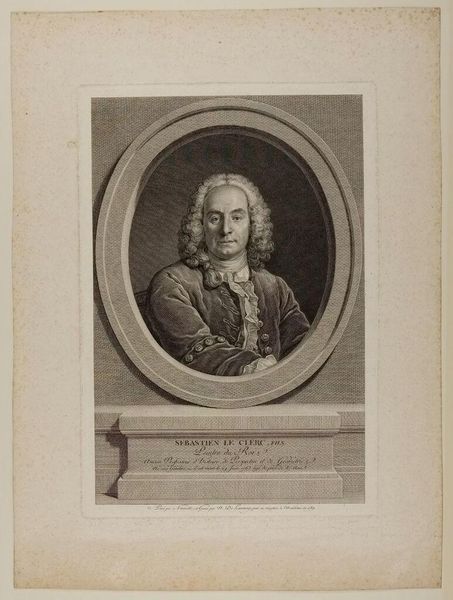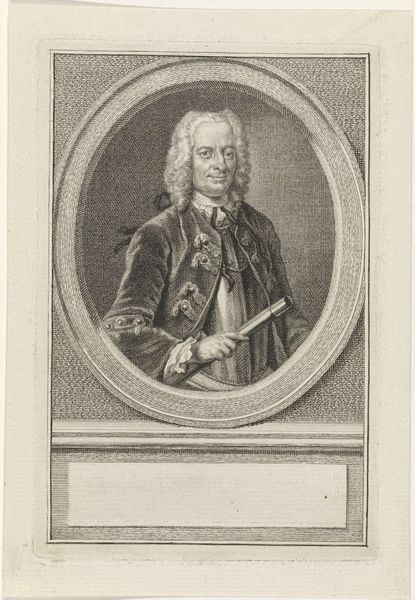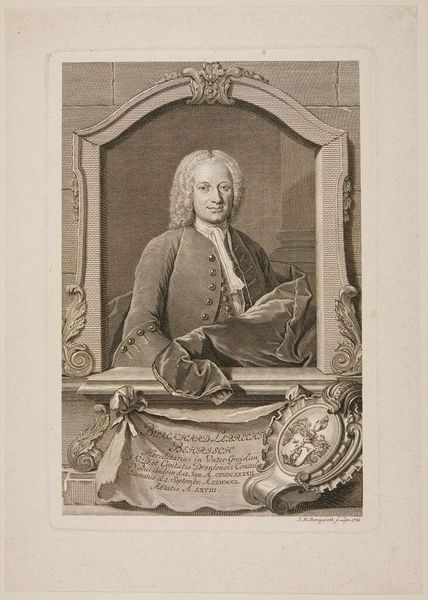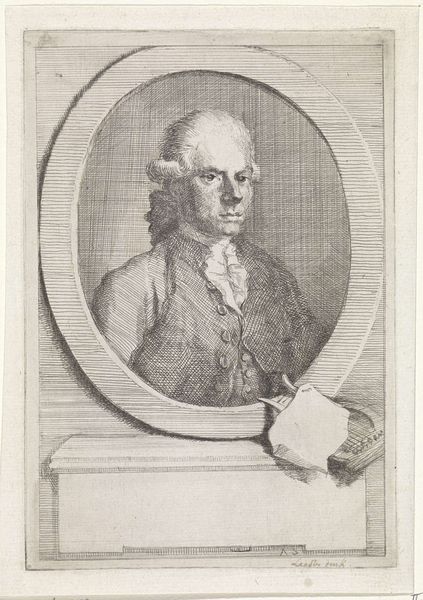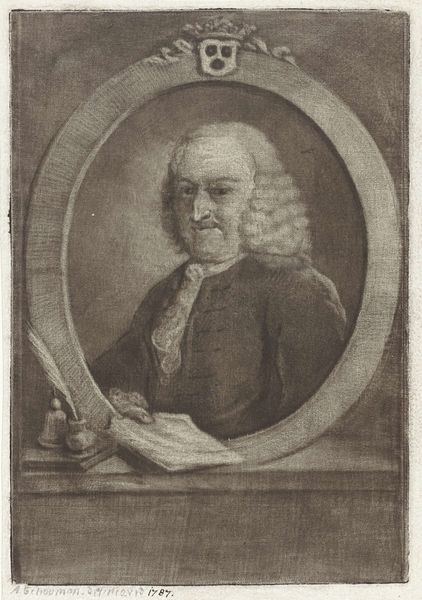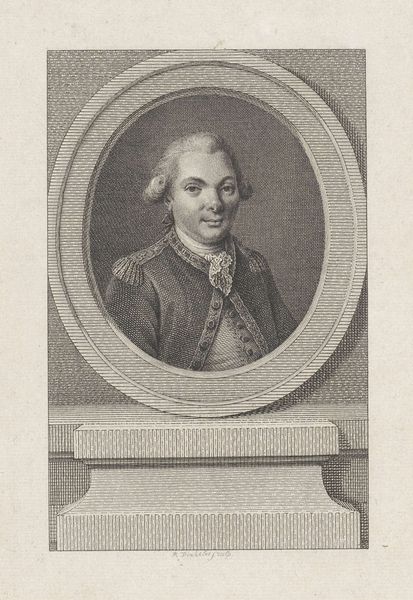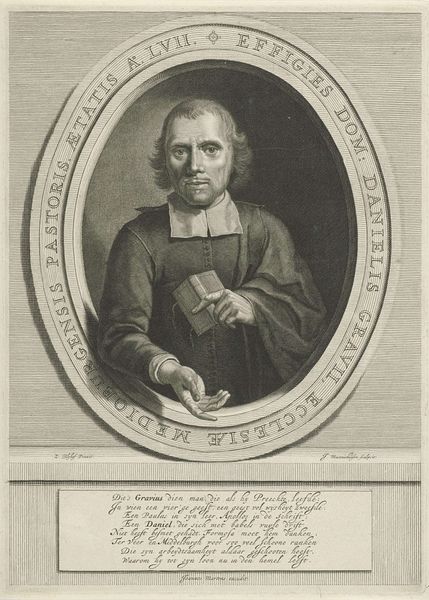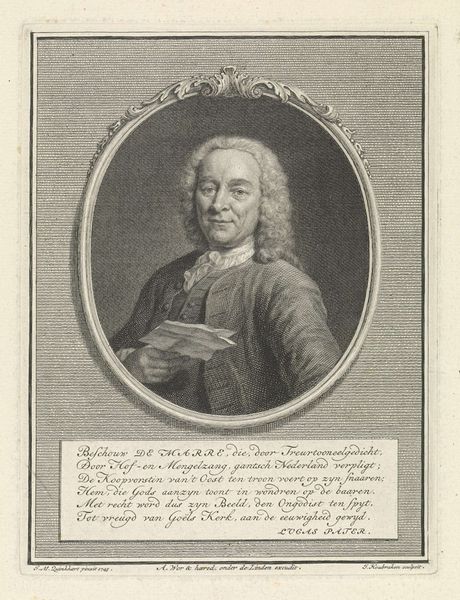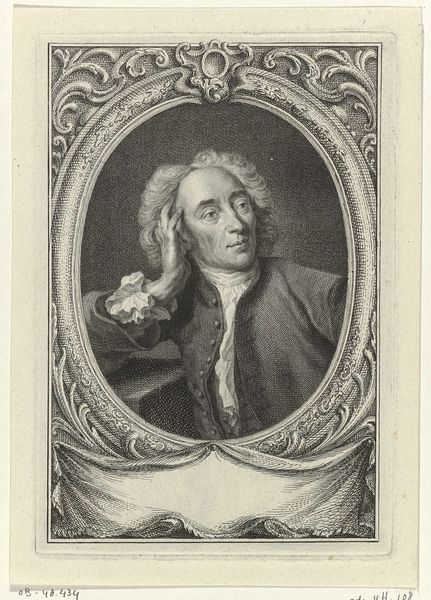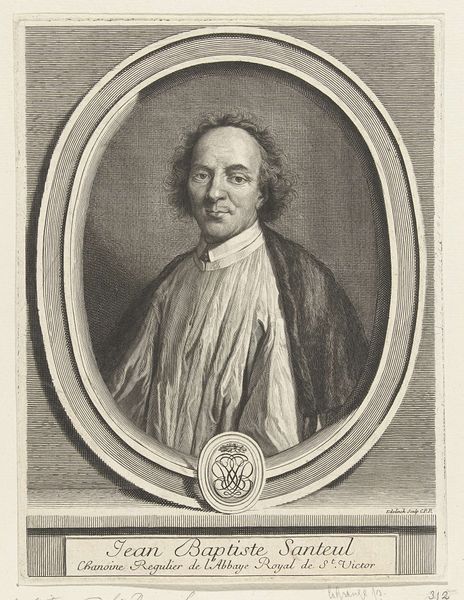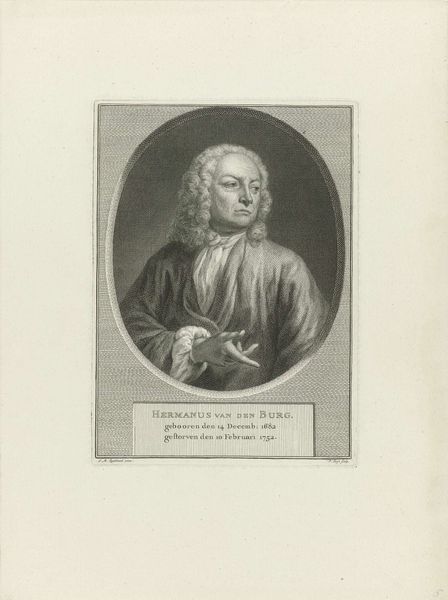
engraving
#
portrait
#
neoclacissism
#
pencil drawing
#
line
#
academic-art
#
engraving
Dimensions: height 110 mm, width 85 mm
Copyright: Rijks Museum: Open Domain
Editor: This is "Portrait of Adolph Heinrich Meltzer," created in 1793 by Jeremias Snoek. It’s an engraving and housed at the Rijksmuseum. I find the sitter’s pose interesting. He's caught mid-action, seemingly interrupted from writing. What can you tell us about this portrait, particularly in the context of its time? Curator: Well, given its clear Neoclassical style, this portrait really speaks to the values that were circulating at the time, of the late 18th century— particularly the emphasis on reason and order. Note how Meltzer is portrayed amidst objects signifying intellect: papers, writing implements, and that small sculptural group which reminds us of antiquity. What do you think this artistic decision communicates about the sitter and its place in the public life? Editor: I suppose the intent was to present him as a man of letters, involved in civic matters. I didn’t really notice those signifiers until you pointed them out. Was that common with portraits in the late 1700s? Curator: Yes, quite! Especially in academic art circles. Think about how portraits often functioned then—not just as likenesses but as tools for shaping public image and cementing social status. The artist wasn’t simply capturing someone’s appearance but constructing an identity aligned with prevailing social and political norms. And portraits helped enforce them too, don’t forget, especially where images had a limited circulation to begin with. Did that pose reflect status? And in turn reinforce and perpetuate it? How do such cultural functions effect our appreciation? Editor: That makes so much sense now! I can see how studying the socio-political background helps illuminate how museums should handle artworks to encourage an audience and improve the value of artwork.. Curator: Exactly! By considering the historical and cultural context, we get a richer appreciation of the portrait's purpose and its impact on how society saw individuals and public service. And that benefits all.
Comments
No comments
Be the first to comment and join the conversation on the ultimate creative platform.
